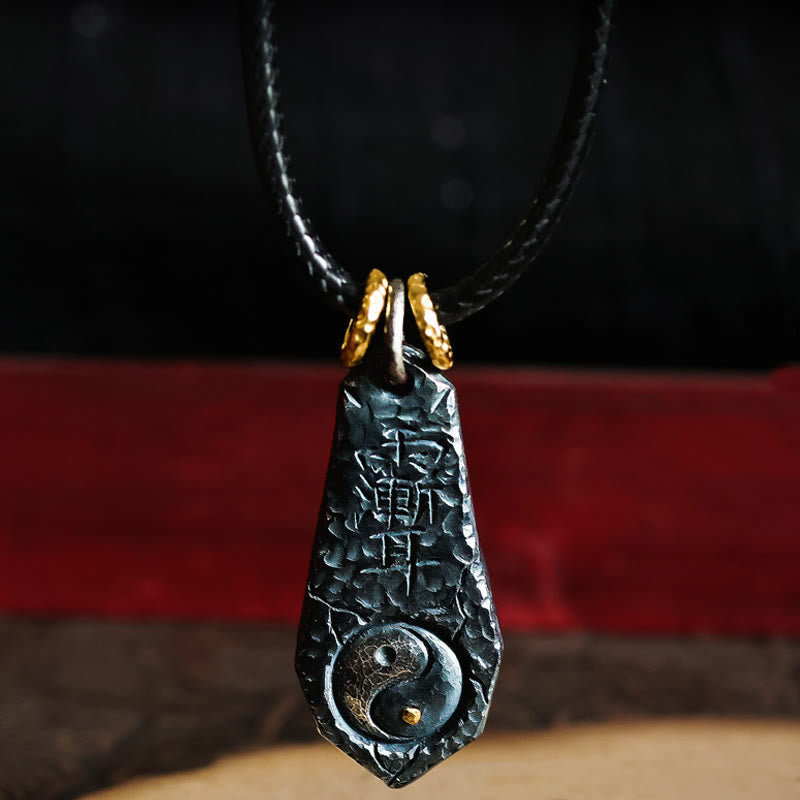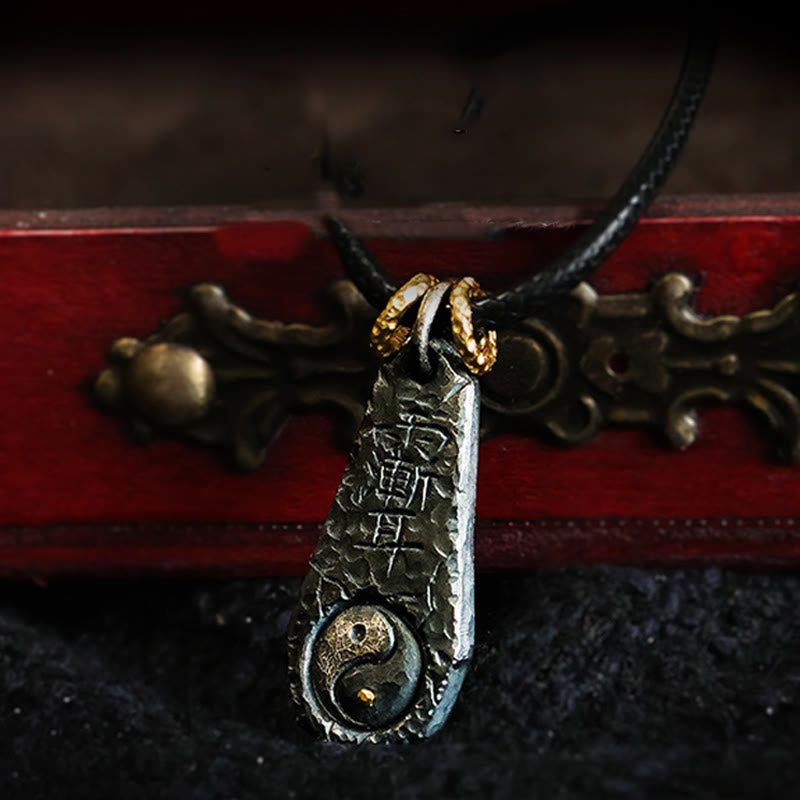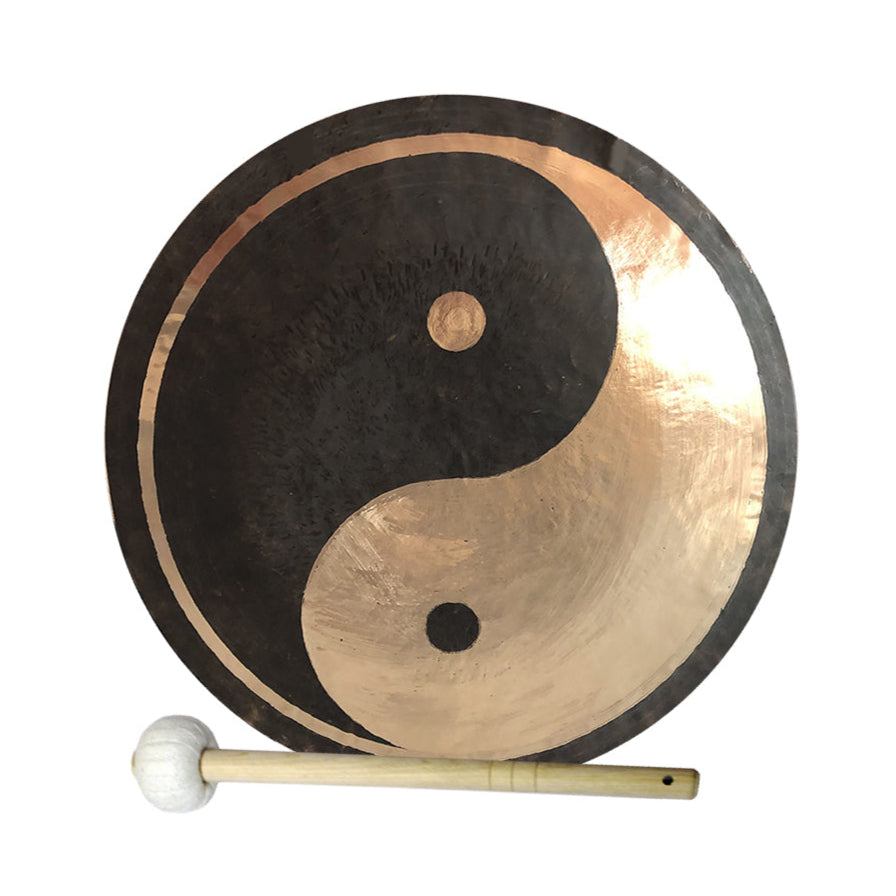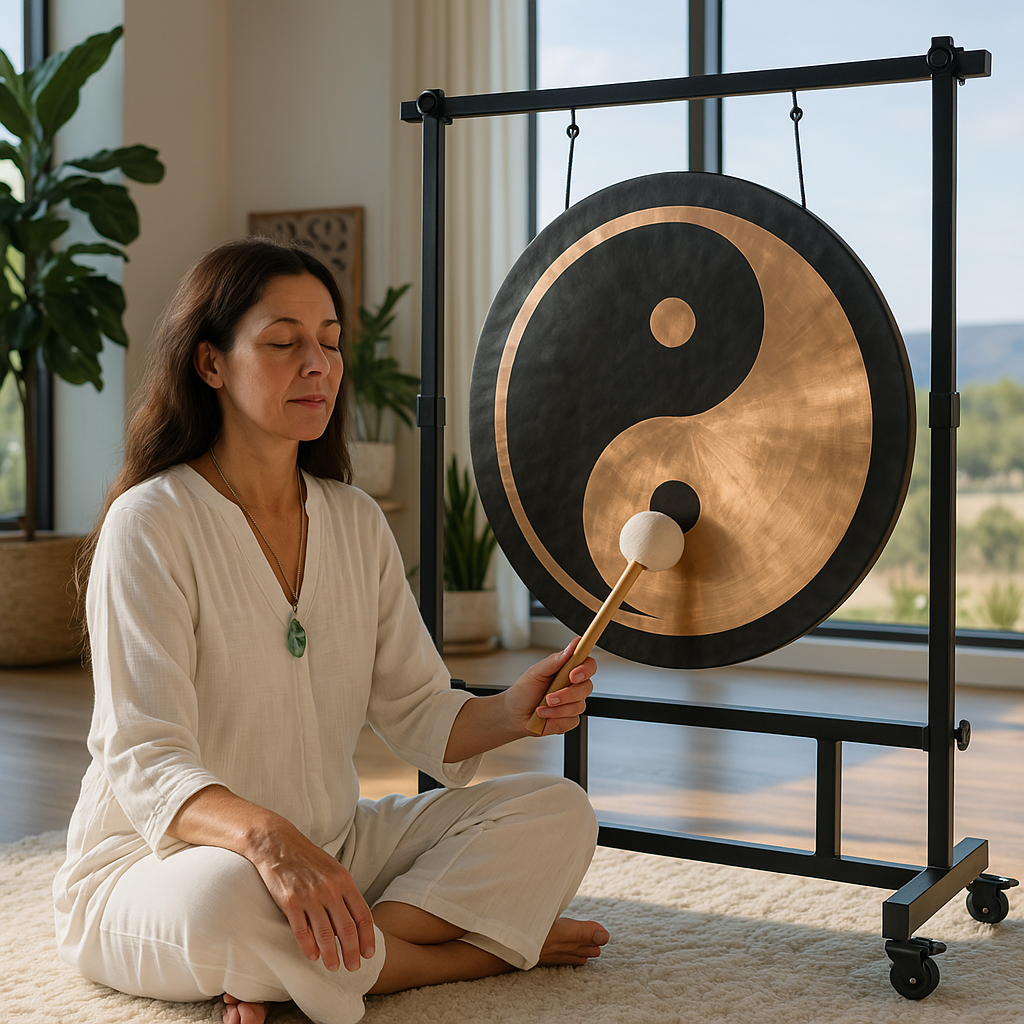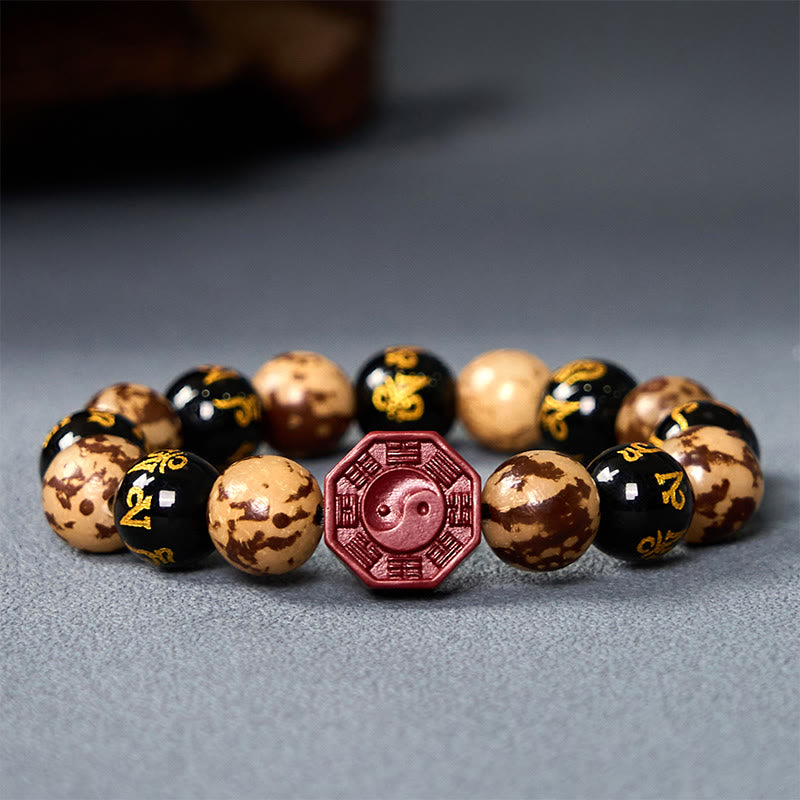In our constant search for balance in a fast-paced world, we often turn to ancient wisdom for answers. Few symbols are as universally recognized and profound as the yin yang. But what does yin yang represent beyond a cool design? It’s a question many of us ask as we seek a deeper connection to ourselves and the world around us. This symbol is more than just a black and white circle; it's a complete philosophical map to understanding harmony, duality, and the interconnected nature of existence.
If you're curious about the spiritual meaning behind this iconic image and how its principles can bring greater equilibrium to your life, you've come to the right place. In this guide, we will provide a complete explanation of the yin yang symbol, exploring its core philosophy, the meaning of its distinct parts, and how you can apply its wisdom to cultivate personal harmony. Get ready to see this ancient symbol in a new light.
The Core Philosophy: A Symbol of Universal Duality
At its heart, the yin yang symbol represents the concept of dualism—the idea that the universe is composed of opposing but complementary forces. It originates from Taoist philosophy, which emphasizes living in harmony with the 'Tao,' or the natural order of the universe. The symbol visually expresses that everything in existence contains its opposite, and that these opposites are not in conflict but in a constant, dynamic dance of balance. It teaches that light cannot exist without darkness, growth cannot happen without decay, and strength cannot be understood without gentleness.

This powerful idea shows that harmony is not about achieving a static state of all good or all light, but about embracing the interplay between these forces. True balance comes from acknowledging and integrating both sides of the coin in our lives, our personalities, and the world we see.
Deconstructing the Symbol: Yin vs. Yang Explained
To fully grasp what the yin yang sign means, we must look at its individual components. The circle is divided by a sinusoidal line, creating two teardrop-shaped halves—one black (Yin) and one white (Yang). This division itself is significant, as the flowing line suggests perpetual motion and change, not a rigid separation.
The Essence of Yin
Yin, the black portion of the symbol, represents the more passive, receptive, and internal energies. It is associated with qualities that are often quieter and more introspective. Think of the calm of the night, the nurturing energy of the earth, and the quiet necessary for reflection. Yin is the force of groundedness, rest, and restoration. It is the necessary pause that allows for future action.
The Essence of Yang
Yang, the white section, embodies the active, expansive, and external energies. It is characterized by action, growth, and outward expression. Yang is the energy of the sun, the force of a growing plant, and the drive that fuels our ambitions. It is associated with logic, movement, and the power to create and build. Yang represents the dynamic, visible forces that shape our world.
Key Attributes of Yin and Yang:
- Yin (Black): Feminine, Darkness, Passive, Moon, Water, Cold, Receptive, Intuition, Stillness
- Yang (White): Masculine, Light, Active, Sun, Fire, Hot, Creative, Logic, Movement
Crucially, within the black Yin section, there is a small dot of white, and within the white Yang section, there is a small dot of black. This is a central tenet of the philosophy: nothing is absolute. Within darkness, there is always a seed of light, and within light, there is a shadow. This represents that each force contains the potential for the other, ensuring they are forever interconnected and can transform into one another.
Beyond Duality: The Symbolism of Balance and Harmony
So, does yin yang mean balance? Absolutely. But it's a specific kind of balance—a dynamic equilibrium. The symbol isn't about a 50/50 split of two opposing forces locked in a stalemate. Instead, it represents a harmonious flow where Yin and Yang continuously ebb and flow into one another, creating a whole that is greater than the sum of its parts. This constant movement is what generates energy, life, and consciousness itself.
Understanding this helps us move away from a rigid, "all-or-nothing" mindset. In our lives, we need periods of energetic work (Yang) balanced by periods of deep rest (Yin). We need logical planning (Yang) complemented by intuitive insights (Yin). When we embrace this flow, we cultivate a sense of inner peace and resilience. Carrying a physical reminder of this principle can be a powerful daily practice.
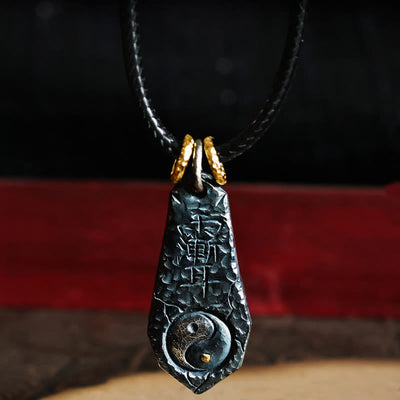
999 Sterling Silver Yin Yang Harmony Necklace Pendant
$399.90 $549.90
Carry the essence of yin yang with you daily—this silver pendant symbolizes universal harmony and spiritual balance.
Explore Product
Bringing Yin Yang into Your Life
The wisdom of the yin yang symbol extends far beyond ancient philosophy. It is a practical tool for self-reflection and personal growth. By observing the interplay of Yin and Yang energies within and around you, you can make more conscious choices to foster balance. Are you working too hard (excess Yang) and neglecting rest (deficient Yin)? Or are you feeling stagnant and passive (excess Yin), in need of more creative action (deficient Yang)?
This awareness can improve your relationships, your work-life balance, and your overall well-being. For a deeper dive into the symbol's ancient roots, the video below offers a fantastic visual explanation.
Applying yin yang principles means recognizing the need for both sides of the spectrum. It’s about scheduling downtime after a busy week, listening as much as you speak, and balancing ambition with contentment. This philosophy, beautifully explained in sources like the Stanford Encyclopedia of Philosophy, encourages a more holistic and compassionate approach to life.

Tools for Cultivating Harmony
As you embrace the journey toward balance, certain tools can help you focus your intention and deepen your practice. Sound healing instruments, symbolic jewelry, and meditation aids can serve as physical anchors for the philosophical concepts of yin and yang, reminding you to stay aligned with your goal of harmony.
Enhance Your Spiritual Practice
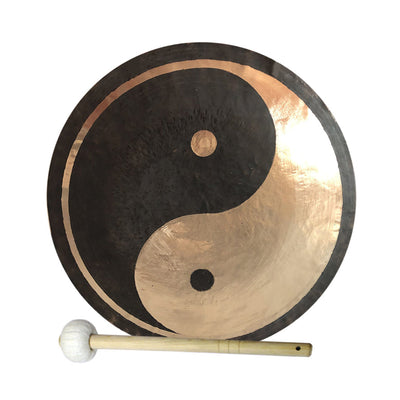
12 to 48 Inch Yin Yang Gong for Sound Bath Practices
$369.99
$479.99
Resonate with yin yang energies through sound—this striking gong inspires mindful meditation and harmonious vibrations. Learn more ➔
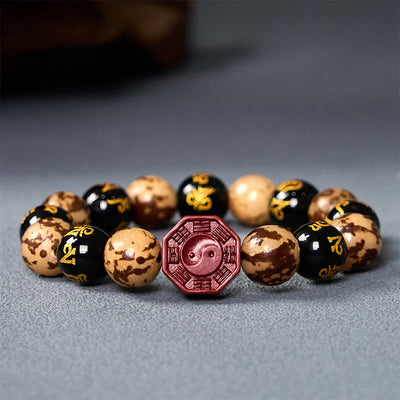
Bodhi Seed Om Mani Padme Hum Cinnabar Calm Bracelet
$24.90
$35.90
Wear Buddhist yin yang wisdom—this bodhi seed bracelet reinforces the balance and unity central to the symbol’s meaning. Learn more ➔
A Path to Wholeness
The yin yang symbol is far more than a simple icon. It is a profound guide to understanding the world and our place within it. It represents the universal law of duality, the necessity of dynamic balance, and the beauty of interconnected harmony. By embracing both the Yin and Yang aspects of our lives, we stop fighting against the natural flow and instead learn to dance with it.
We invite you to reflect on this powerful symbolism and discover areas in your life where you can cultivate greater balance. Explore our collections of symbolic tools to find a meaningful anchor for your journey toward inner peace and wholeness.
Frequently Asked Questions about Yin Yang Meaning
The yin-yang symbol primarily symbolizes balance, harmony, and the concept of dualism. It represents the idea that opposing forces (like light/dark, active/passive) are interconnected and complementary. Each side contains the seed of the other, signifying that they cannot exist in isolation and are part of a dynamic, unified whole.
Yes, balance is a core meaning of the yin-yang symbol. However, it's not a static or rigid balance. It represents a dynamic equilibrium, where the forces of yin and yang are in constant flow and motion, one yielding to the other. This creates a state of harmony and wholeness, not a fixed, unchanging state.
Saying someone is the "yin to my yang" is a romantic or philosophical way of saying they are your complementary opposite. It implies that the other person possesses qualities that balance your own. For example, if you are high-energy and outgoing (Yang), they might be calm and introspective (Yin), creating a harmonious and complete partnership.
The ☯ emoji or symbol is the Taijitu, commonly known as the yin-yang symbol. It means universal balance, harmony, and the interconnectedness of opposing forces. It encapsulates the Taoist philosophy that seemingly contrary forces are actually complementary and interdependent in the natural world, giving rise to each other in turn.
In relationships, yin and yang represent the complementary energies that partners bring. A healthy relationship has a dynamic balance of both. For instance, one partner's steady, nurturing nature (Yin) might balance the other's adventurous, driven spirit (Yang). It's not about one person being all Yin and the other all Yang, but rather about how their different energies support each other to create a strong, balanced, and harmonious whole.


